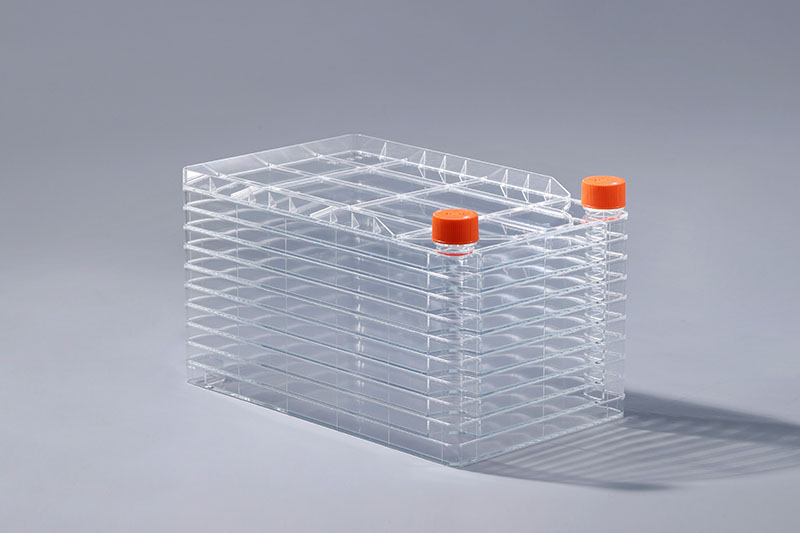A cell factory is a one-layer or multi-layer structure of cell culture consumables. During the cell culture process, we need to grasp the growth state of the cells in time before proceeding to the next step. The number of viable cells can be detected by trypan blue staining. The specific operation method is as follows:
1. For adherent cells, aspirate the medium, add the digestion solution, and digest in the incubator for an appropriate time. After the cells became round, the digestion was terminated by adding an equal or greater volume of medium than the volume of the digestate. After centrifugation, the cell suspension is made with culture medium;
2. Take 0.5ml trypan blue solution, 0.3ml PBS and 0.2ml cell suspension and mix well. Then the mixture was left for 1-2min. Use a capillary pipette or a 10ul small pipette tip to draw a small amount of the mixture and inject it into the hemocytometer;
3. Count at least 1000 cells and count the number of stained cells;
4. Wash the counting plate and coverslip with ultrapure water and 75% ethanol;
5. Normal cells will not be stained, only after the cells die, the cell membrane permeability becomes larger, trypan blue enters the cells, and the cells appear blue. The mixture should not be placed for too long, otherwise the normal living cells will also take up the dye, which will affect the counting accuracy;
6. Cell viability (%) = (total number of cells - number of stained cells)/total number of cells*100;
7. Like the cell counting method, trypan blue staining has a large error. It can only detect the early apoptosis level, and cannot show the difference between the control group and the experimental group.
In the process of culturing cells in a cell factory, there are always some cells that die due to various reasons. Mastering the number of living cells and cell viability is a key operation in cell culture experiments and an effective way to ensure the progress of the experiment.
The FAI climbed 5.9 percent year-on-year in the first 11 months of 2018, quickening from the 5.7-percent growth in Jan-Oct, the National Bureau of Statistics (NBS) said Friday in an online statement.
The key indicator of investment, dubbed a major growth driver, hit the bottom in August and has since started to rebound steadily.
In the face of emerging economic challenges home and abroad, China has stepped up efforts to stabilize investment, in particular rolling out measures to motivate private investors and channel funds into infrastructure.
Friday's data showed private investment, accounting for more than 60 percent of the total FAI, expanded by a brisk 8.7 percent.
NBS spokesperson Mao Shengyong said funds into weak economic links registered rapid increases as investment in environmental protection and agriculture jumped 42 percent and 12.5 percent respectively, much faster than the average.
In breakdown, investment in high-tech and equipment manufacturing remained vigorous with 16.1-percent and 11.6-percent increases respectively in the first 11 months. Infrastructure investment gained 3.7 percent, staying flat. Investment in property development rose 9.7 percent, also unchanged.
 English
English



















































